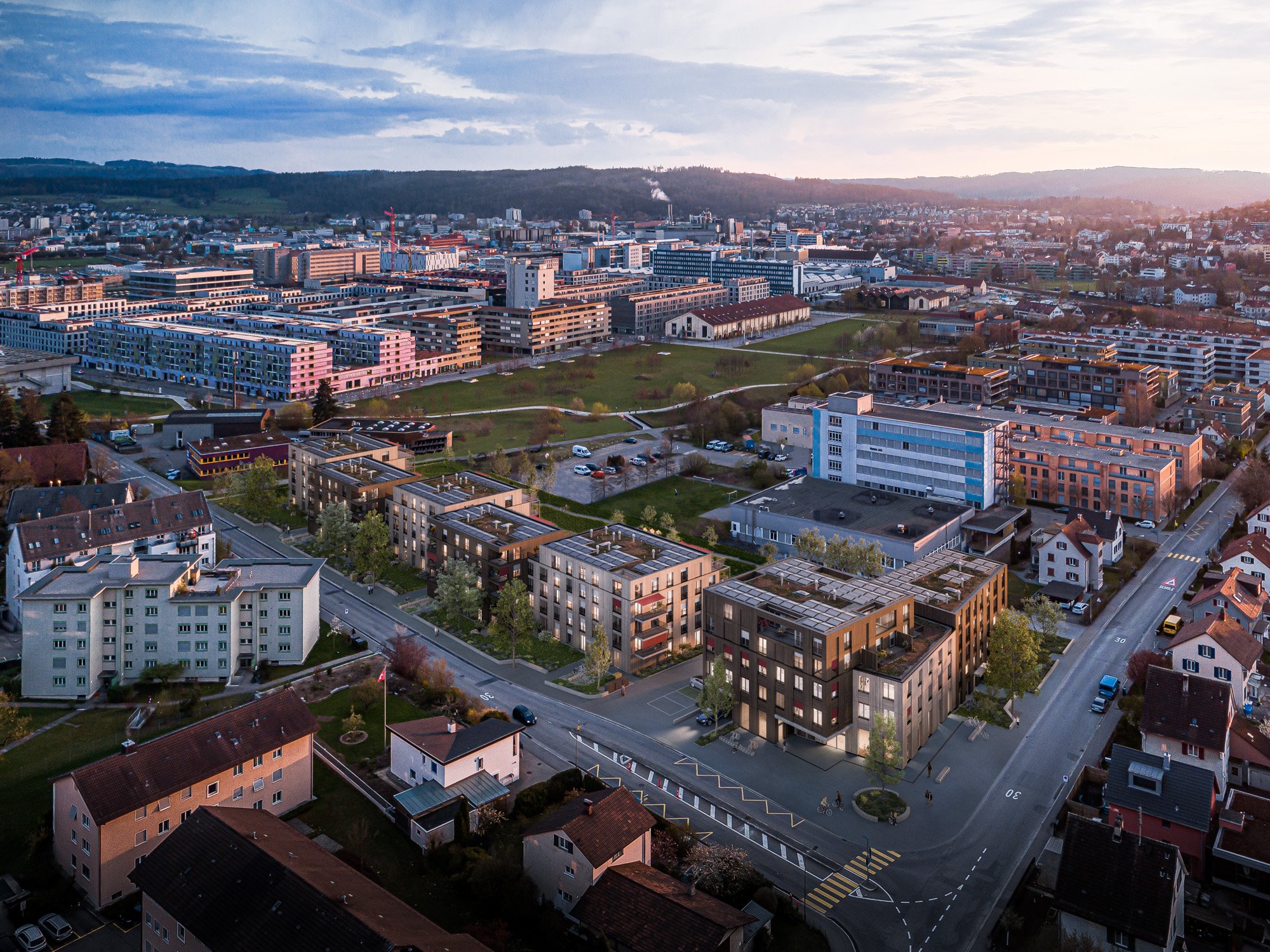
Energy Management System
Real estate

Reforms are required if we are to ensure that the second pillar can continue to play an essential part in financial security in retirement. Yet the political reform process is at an impasse – to the detriment of younger insureds. The fact is, retirement pensions currently need to be co-financed by active insureds – contrary to the original plan of saving for your own 2nd pillar.
This redistribution is not viable for us in the long term. That’s why Asga is forging ahead with plans to safeguard the future of our cooperative, as well as the retirement pensions of current and future generations. With that objective in mind, we have agreed a comprehensive package of measures:
We know that a change to the pension system always raises key questions. In the following section we have put together a list of the frequently asked questions. And if you still have any questions, we’re here to help you.
We ensure that all insureds share in the success of the cooperative through a fixed distribution formula. If the funded status is between 112% and 116%, we pay a guaranteed interest rate of 2% on retirement savings capital. If the funded status is over 116%, we pay out based on the formula of 2% + ½ * (funded status – 116%).
Where the funded status is at least 116%, pensioners whose interest rate as implied by the conversion rate is lower than the actual participation also receive a 13th monthly pension payment. In that way, these pensioners likewise share in the cooperative’s income.
The pension level depends on the conversion rate used to multiply the available retirement savings capital. Together with the employer, every member accumulates personal retirement savings capital during their working life (usually from 25 to 64/65 respectively). The retirement savings capital is converted into a lifelong pension based on the conversion rate (CR). Example: Based on retirement savings capital of CHF 500 000, a CR of 5.2% gives an annual pension of CHF 26 000.
The conversion rate for retirement at age 65 will be reduced to 5.2% by 2025 through annual reductions of 0.2 percentage points. Early retirement and normal retirement for women will be calculated based on a reduction of 0.15 points per year.
Conversion rate for normal retirement
| 2021 | 2022 | 2023 | 2024 | 2025 | |
| Men | 6,0 % | 5,8 % | 5,6 % | 5,4 % | 5,2 % |
| Women | 5,85 % | 5,65 % | 5,45 % | 5,25 % | 5,05 % |
With the introduction of the blanket conversion rate, Asga has also been calling for an age-dependent conversion rate. The actual age at retirement is therefore crucial to the conversion rate applied. Actual, basic biometric data and the duration of pension payments, in addition to interest rate expectations, are used to determine the conversion rate.
The statutory conversion rate applies to mandatory retirement savings capital. To guarantee the statutory minimum pension, Asga maintains a “shadow account” for each member. More specifically, a comparative calculation between the regulatory and statutory conversion rate is prepared for the calculation of each individual retirement pension The two pension amounts are then compared. The higher retirement pension (see sample calculations) is paid in each case. Thus the statutory minimum pension is guaranteed in each case.
Sample calculation: Man/retirement in 2025
The retirement savings capital is CHF 250 000.00, comprising CHF 240 000.00 in mandatory and CHF 10 000.00 in extra-mandatory retirement savings capital.
| Conversion rate | Annual retirement pension | ||
| Retirement savings capital, total | CHF 250’000.- | 5,2 % | CHF 13’000.- |
| Retirement savings capital based on shadow account | CHF 240’000.- | 6,8 % | CHF 16’320.- |
| Actual retirement pension paid corresponds to statutory minimum pension: | CHF 16’320.- | ||
There is no hard-and-fast answer to this question. Key factors include the relationship between mandatory and extra-mandatory retirement savings capital, the year in which you retire, and which pensions you wish to compare.
The personal insurance certificate you receive from Asga every year shows whether you have any more scope to purchase benefits. If so, your purchases will increase your personal retirement savings capital; this may then improve your retirement pension. Moreover, contributions are tax-free and can be offset against your income.
Modern pension plans have up to three different savings plan choices. Ask your employer whether such a solution is offered under their current pension plan. If so, you can switch to a plan with higher savings and therefore increase your personal monthly savings contribution.
The change to the conversion rate is in response to reality: Life expectancy is thankfully continuing to increase, while the prospect of generating the required income on the financial markets unfortunately remains poor. Against this backdrop, the conversion rates that are currently being granted are too high. Every year, the gap between accrued retirement savings capital and promised pensions is financed through a redistribution from employed people to pensioners. In the absence of any adjustment, the redistribution from members to pensioners would continue to increase. In Asga’s case, this amounted to as much as CHF 82.6 million in 2020. This redistribution is not viable in the long term – nor is it in line with the spirit of the 2nd pillar. By lowering the conversion rate, Asga will first and foremost increase the long-term security of its members’ retirement savings capital. Furthermore, as a result of these measures there is an increasingly realistic chance of generating superior returns on your savings capital in years in which there is a good return on investment; given the interest and compound interest effect, this is in turn reflected in higher retirement savings capital for you. On behalf of its members, Asga intends to remain a secure yet attractive pension fund in the future.
There will not be any reduction in pensions for existing pensioners, who are unaffected by these measures.
Active members who are due to retire shortly will be affected most by the lowering of the conversion rate. For that reason, the reduction in the conversion rate by 0.2 percentage points annually will be a gradual process. We are convinced that, in this way, the lowering of retirement pensions can be adequately cushioned and therefore a socially responsible transitional solution found without neglecting the long-term objective of Asga’s security.

Real estate

Real estate, Capital investments, Capital investments, Real estate

Asga, Employer

Employer

Capital investments, Real estate